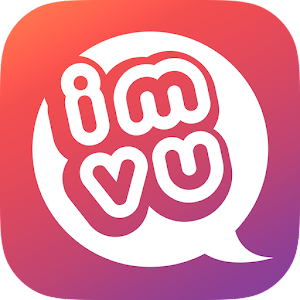Safe Lagoon: Protecting your kids from dangerous apps
Dangerous social media apps are ringing alarm bells in 2024. Parents, it’s time to dial up vigilance!
Platforms like TikTok, Instagram, and Snapchat aren’t just about likes and shares.
They’re potential hotspots for cyberbullying, unsavory content, and prowling predators.
And it doesn’t stop there. Apps like Kik and Whisper? They’re anonymous chat rooms – and magnets for online threats.
Many of the apps discussed, including widely-used ones, can be incredibly beneficial and secure when used responsibly.
Engaging in open and honest conversations with your child about potential risks and safe online practices is crucial.
Let’s dive in to help you open the dialogue on online safety with your kids.

TikTok
A hotbed for creativity, allowing users to craft and circulate brief, engaging videos amongst a rapidly growing youth audience.
Creative Canvas: A stage for users to unleash and share their creativity.
Viral Velocity: Content that can catch fire, capturing millions of views swiftly.
What parents need to know:
Despite its allure, TikTok’s landscape is tinged with complexities that parents can’t ignore.
Here’s a closer look:
Moderation Mishaps: The app’s moderation and age checks are under scrutiny, stirring worries about young users stumbling upon inappropriate content unsuitable for kids.
Privacy Perils: The ease of connecting with unknowns and sharing personal info raises significant safety alarms.
Addictive Content: The compelling nature of TikTok videos can lead to excessive screen time, sparking concerns about mental health and overall well-being.
All things being equal parental awareness and intervention become paramount.
The strategy should involve:
Mindful Monitoring: Keep a watchful eye on your child’s TikTok use and stay attuned to their online interactions.
Open Dialogues: Initiate candid conversations about the dangers of using social media platforms like TikTok.
Boundary Building: Set clear guidelines to foster safe and responsible digital habits.

Snapchat
Snapchat is the go-to chat app for sending ephemeral photos and videos, engaging millions worldwide.
- Seamless Sharing: Users enjoy the spontaneity of sharing life’s moments, as they happen.
- Ephemeral Essence: Content that’s there, then subtly vanishes.
What parents need to know:
This apparent harmlessness masks deeper concerns for parents. Here’s the inside story:
- Cyberbullying Risk: Quick-fire messages can also mean quick-fire harm.
- Monitoring Maze: Those fleeting messages make parental oversight a complex task.
- Filter Illusion: Augmented reality features, though innovative, can distort self-perception.
- Unseen Interactions: The potential for unsolicited contact or exposure to unsuitable content is real.
For parents who’s kids use apps like Snapchat staying clued-up about your child’s digital footprint is non-negotiable.
Engage in open, informed dialogues about the nuanced risks of platforms like Snapchat.
It’s about steering through the digital landscape with awareness and care.

Ask.fm
A digital platform where curiosity meets anonymity, allowing users to ask and answer queries without revealing their identities.
- Anonymity’s Arena: Encourages frank and open exchanges among users.
- Dialogue Dynamics: Facilitates a vibrant exchange of thoughts and questions.
What parents need to know:
This cloak of anonymity doesn’t come without its pitfalls, making Ask.fm one of the potentially dangerous apps for kids and demanding parental vigilance. Here’s the detailed
view:
- Cyberbullying Concerns: The shield of anonymity can embolden harmful rhetoric, leading to online abuse and harassment.
- Untraceable Aggressors: Tracing the source of hurtful comments becomes a complex challenge, complicating efforts to counteract such behaviors.
- Content Caution: The platform’s open nature might expose young minds to inappropriate content and discussions.
In light of these concerns, parents are urged to take a proactive stance. It’s imperative to:
- Monitor and Discuss: Keep an eye on your child’s online interactions with apps like Safe Lagoon and foster open dialogues about the nuanced risks associated with platforms like Ask.fm.
- Promote Awareness: Cultivate an environment where the impact of online actions is understood and empathized with.
Safe Lagoon stands as the digital guardian for over a million families.
It’s not just a tool; it’s peace of mind, ensuring kids’ screen time is both safe and balanced.
Simplicity meets security.

Kik Messenger
Kik is a video chat app that’s all the rage among teens and young adults, offering effortless connections through texts, photos, and videos.
- User-Friendly Interface: A hit for its easy navigation and cool features.
- Anonymity Option: Users can sign up without tying in their phone number, adding a layer of privacy.
What parents need to know:
Kik’s very features that draw the youth crowd also bring forth significant parental concerns. Let’s break it down:
- Privacy vs. Safety: The anonymity factor, while appealing, paves the way for cyberbullying and unwanted interactions with online predators.
- Content Caution: The ease of sharing content in private groups without oversight can lead to exposure to inappropriate material.
- Communication Conundrums: The potential for secretive chats with unknown contacts raises red flags.
In light of these considerations, parents are encouraged to navigate this digital terrain with a strategic approach. This entails:
- Informed Oversight: Stay in the know about your child’s Kik interactions and be mindful of their online engagements.
- Dialogue and Guidance: Foster an environment of open communication, discussing the intricate web of online safety and setting clear, reasonable boundaries for app usage.

Tinder
Known as the modern matchmaking app Tinder is a trendy platform that revolutionizes the dating scene by allowing users to swipe their way through potential connections based on location, shared interests, and snapshots.
This app is really unsuitable for young kids – we could even say dangerous for kids and teenagers.
- Profile Perusal: A digital meeting ground where profiles paint pictures of possible matches
- Swipe Dynamics: A simple left or right swipe can ignite a conversation or extinguish potential sparks.
What parents need to know:
Tinder’s structure raises several flags for parental concern.
- Identity Illusions: The ease of profile fabrication can lead to misleading interactions and unsafe meetings for unsuspecting kids.
- Age Authentication Issues: A growing trend of minors bypassing age restrictions to access the app intensifies the call for vigilance.
- Content Concerns: The platform’s open-ended nature may expose young users to extremely dangerous content and dialogues far beyond their maturity level.
- Geolocation Glitches: The feature designed to bring people together can, unfortunately, also make users, particularly minors, vulnerable to unwelcome attention.

Instagram is a canvas for users to broadcast their life’s chapters through vivid photos, engaging videos, and dynamic stories, initially designed as a beacon for creativity and social tethering.
- Creative Showcase using a video chat app: A space for artistic expression and social linkage.
- Visual Narratives: Life’s moments, captured and shared in a visual symphony.
What parents need to know:
Amidst its vibrant hues Instagram presents aspects that need parental attention. Here’s the broader picture:
- Mental Health Maze: The platform can sometimes spiral into a realm of comparison and competition, potentially stirring feelings of inadequacy and diminished self-worth
- Content Caution: There’s a tangible risk of young users encountering content that’s inappropriate or being targeted by cyberbullying and online predators.
- Validation Vortex: The pursuit of likes and followers might shift the focus to external validation, overshadowing the nurturing of the child’s self-esteem.

Houseparty
Houseparty is a digital hub designed for connecting friends through video chats and interactive group games, aiming to bridge the gap when physical meet-ups aren’t feasible.
- Video Vibes: A cozy corner for friends to hang out virtually.
- Game On: A playful twist with group games to keep the party lively.
What parents need to know:
Houseparty’s framework presents aspects that necessitate parental attention. Let’s explore further:
- Cyberbullying Concerns: The app’s open communication channels can sometimes be a conduit for inappropriate content or cyberbullying, putting young users at risk.
- Privacy Predicaments: Reports of security loopholes and hacking incidents within the app spotlight potential vulnerabilities in user privacy and data safety.
- Policy Puzzles: The app’s governance documents may not offer robust protection for personal details, posing concerns over privacy infringements.

Holla
Tailored for the younger crowd, Holla offers a vibrant space for teens to mingle, sharing their life through photos and videos, and expressing themselves in a creative and engaging environment.
- Teenage Territory: A platform that resonates with the youthful spirit, fostering self-expression and peer interaction.
- Visual and Vibrant: Emphasizes photo and video sharing, making every interaction lively and pictorial.
What parents need to know:
Holla’s design and features bring forth several aspects that parents need to consider carefully. Here’s a more in-depth look:
- Anonymity Aspect: The option for users to interact without revealing their true selves can lead to safety compromises, potentially opening doors to risky or unsuitable exchanges.
- Content Concerns: The ease of disseminating and accessing visual content can inadvertently lead to exposure to explicit or disturbing material.
- Oversight Obstacles: A lack of robust parental control features complicates the task of tracking and managing children’s activities on the app.
- Addiction and Aggression: The addictive allure of the app, coupled with the potential for cyberbullying, amplifies the need for parental vigilance.

Blendr
Crafted to bridge connections, Blendr utilizes location technology to introduce users to new acquaintances in their vicinity, facilitating conversations, friendly banter, and the prospect of in-person meetings.
- Local Link-ups: Harnesses geographical tech to match users with nearby peers.
- Interaction Invitation: A gateway to chat, flirt, and possibly more.
What parents need to know:
Beneath its social surface, Blendr’s framework raises several red flags for parental consideration.
Let’s unpack the details:
- Stranger Safety: The app’s local meet-up premise may expose young users to interactions with individuals whose intentions are not aligned with their well-being.
- Safety in Meetings: The transition from digital chats to physical meet-ups comes with inherent risks, from the unforeseeable to the undesirable.
- Age Verification Vagueness in app store: The app’s lenient age-check process allows for age misrepresentation, broadening access beyond the intended demographic.

Zoomerang
A hit among the younger crowd, Zoomerang offers a platform for crafting and sharing short videos, replete with catchy music, trendy filters, and eye-catching special effects.
- Creative Canvas: The app allows tools and features for users to unleash their creativity through video storytelling.
- Social Sharing: Encourages interaction and engagement by allowing users to share their creations with a broader audience.
What parents need to know:
Despite its appealing features, Zoomerang introduces certain risks that necessitate parental awareness and involvement:
- Privacy Pitfalls: The app’s limited privacy controls can inadvertently open up young users’ videos to comments and views from unknown individuals.
- Cyber Risks: Exposure to potential cyberbullying, online predators, and unsuitable content is a pressing concern given the platform’s open nature.
- Screen Time Surge: The app’s captivating format might lead to excessive use, potentially impacting the mental and physical well-being of young individuals.
- Social Pressure: The quest for followers and likes can exert undue stress, potentially affecting self-esteem and mental health.
- Trend Traps: The propagation of risky challenges and trends through the app poses safety hazards for impressionable users.

Parlor
Parlor is another digital crossroads where users delve into anonymous group chats, offering an opportunity to interact with an international array of strangers.
- Global Conversations: A platform fostering connections and discussions with a diverse global community.
- Anonymity Aspect: Prioritizes user anonymity, adding a layer of privacy to the interaction.
What parents need to know:
Regardless of its potential for worldwide connectivity, Parlor’s design introduces significant concerns, particularly for the younger audience:
- Verification Voids: The absence of stringent user verification and oversight paves the way for individuals with harmful intentions to interact with and potentially exploit younger users.
- Predatory Potential: The app’s structure can be manipulated by predators aiming to groom and entice vulnerable youngsters into precarious situations.
- Cyberbullying and Content Concerns: The shield of anonymity can encourage cyberbullying and the spread of inappropriate content, while the lack of user traceability complicates parental efforts to safeguard their children.
- Online Threats and Emotional Impact: The rise in digital risks and the potential for psychological distress underscore the need for vigilant parental supervision.

Hoop
Hoop is a digital playground where teenagers converge to craft and circulate videos, fostering a vibrant community of content creation, messaging, and social connection.
- Creative Connect: A platform encouraging users to produce and share their unique video narratives.
- Social Synergy: Facilitates interaction, allowing users to follow and message one another, weaving a network of digital camaraderie.
What parents need to know:
Beneath its engaging exterior, Hoop introduces a spectrum of concerns that parents should attentively consider:
- Snap Sharing: The feature of exchanging ‘snaps’ with others can inadvertently open doors to unfamiliar users and potentially unsuitable content.
- Proximity and Privacy: The app’s capability to link users with nearby peers invites questions about safety and appropriate encounters.
- In-App Incentives: Encourages monetary transactions within the app, a potential pitfall for teenagers yet to grasp the full implications of digital spending.
- Safety Settings: The adequacy of privacy controls and protective measures remains a crucial point, especially in safeguarding against online predators or cyberbullying.

Voxer
Voxer is a versatile communication tool that brings voice, text, photos, and videos into real-time conversations, offering a tactile alternative to traditional typing.
- Voice-First Approach: Prioritizes voice messages for a more personal touch.
- Multimedia Messaging: Enriches conversations with a mix of texts, photos, and videos.
What parents need to know:
Despite its convenience, Voxer’s functionality brings to light several considerations for parents. Let’s delve into the details:
- Communication Caveats: The ability to connect with unfamiliar users opens pathways to potential cyberbullying, unsuitable content, and unexpected contact from strangers.
- Monitoring Hurdles: The real-time nature of messaging, coupled with the option to delete conversations, poses challenges for parental oversight and guidance.
- Privacy Parameters: Navigating the balance between connectivity and privacy is a nuanced task, requiring attention and deliberation.

Tumblr
Launched in 2007, Tumblr stands as a vibrant hub for users to curate and share a diverse array of content, from thought-provoking text posts to visually captivating images and videos, fostering a community centered around creativity, expression, and connection.
- Creative Canvas: A digital stage for artistic and personal expression.
- Community Connect through chat app: A space where like-minded individuals converge, sharing and interacting with content.
What parents need to know:
Despite its rich tapestry of content, Tumblr’s landscape is marked by areas of concern that parents should be mindful of. Here’s a detailed exploration:
- Content Caution: The platform hosts a spectrum of content, including unfiltered and explicit material, despite efforts to limit adult-oriented posts.
- Privacy Perimeters: The platform’s relatively open nature and fluid information exchange can pose challenges regarding privacy, cyberbullying, and unsolicited interactions.
- Influence and Impact: Certain corners of Tumblr are known to circulate content related to self-harm, eating disorders, and other sensitive topics, presenting potential risks to young and impressionable minds.

Bumble
Bumble emerges as a unique dating app, championing female empowerment by granting women the prerogative to initiate conversations and establish connections.
It offers a swiping feature to explore profiles, match with others, and encourages users to engage in dialogue within a day of matching.
- Woman-Centric Design: Puts women in the driver’s seat, fostering a platform where they lead the interaction.
- Timed Conversations: Encourages active engagement by setting a 24-hour window for initiating chats post-match.
What parents need to know:
Don’t let your kids say otherwise: is not an app for children or teens.
Bumble presents concerns that parents should address with diligence and foresight:
- Misrepresentation Menace: The possibility of users disguising their true identities and intentions, potentially leading to unsafe or harmful scenarios.
- Content Caution: The ever-present risk of encountering unsuitable or explicit material on the app, posing threats to the emotional and mental health of younger users.
- Exploitation Exposure: Reported incidents where predatory adults have misused the app, targeting and exploiting minors, highlighting the need for cautious navigation.

VSCO
Known for its sleek, minimalist design, VSCO stands out in the social media landscape, offering a platform for artistic photo and video sharing, while nurturing a community of creatively inclined individuals.
- Creative Expression: A canvas for users to showcase their visual creativity.
- Community Building: Fosters connections among users with similar artistic interests.
What parents need to know:
Amidst its artistic allure, VSCO presents certain aspects that parents should be mindful of:
- Content Exposure: The platform may sometimes host inappropriate content, posing a risk for younger users.
- Privacy Concerns: VSCO’s privacy settings might not offer sufficient protection against unwanted interactions or cyberbullying.
- Limited Monitoring Capacity: The absence of a public comment feature can hinder parental efforts to track online interactions and spot troubling behavior.
- Perfection Pressure: The ease of editing and the pursuit of an idealized feed can inadvertently fuel feelings of inadequacy or low self-esteem among young users.

BIGO LIVE
BIGO LIVE is a dynamic platform that invites users to broadcast their daily moments, showcase talents, and engage with an international audience in real time.
- Live Interaction: Offers a stage for real-time sharing and connection.
- Global Stage: A window to a worldwide audience, encouraging a broad spectrum of interactions.
What parents need to know:
Despite its potential for creativity and connection, Bigo Live introduces various concerns that necessitate parental awareness and action:
- Anonymity and Exploitation: The app’s anonymous nature can simplify the process for online predators to target and exploit younger users.
- Content Caution: Not all broadcasts on Bigo Live are suitable for all ages, with instances of inappropriate behavior and content that could be detrimental to young viewers.
- Monetary Temptation: The app’s virtual gifting mechanism might prompt users to spend substantial amounts, raising financial concerns for parents.
- Mental Health Impact: The addictive allure of live streaming and the relentless pursuit of attention and validation can adversely affect a child’s mental and emotional health.

Confide
Confide has carved a niche in the messaging app market with its robust privacy features, offering end-to-end encryption and self-destructing messages, designed to shield sensitive exchanges from prying eyes.
- Privacy Protocols: Employs stringent measures to ensure conversations remain confidential and ephemeral.
- Discreet Deletions: Messages vanish post-reading, leaving no digital footprint.
What parents need to know:
Despite its protective allure, Confide introduces complexities that parents should navigate with attentiveness and concern:
- Hidden Hazards: The app’s ability to erase messages post-reading might inadvertently facilitate risky or inappropriate behaviors among minors, eluding digital detection. Confide has been very popular with teens sexting.
- Confidentiality Caveats: The strong emphasis on privacy could embolden users, including young individuals, to partake in personal exchanges with unknown entities, potentially leading to privacy invasions, cyberbullying, or exploitation by online predators.
- Professional Predicaments: The app’s adoption in corporate contexts sparks debates over ethics and legality, given its capacity for covert, unrecordable communications that might contravene organizational norms or sector-specific regulations.

Omegle
Omegle was one of the most dangerous apps out there – yes “was” – it was shut down in 2023.
The internet’s anonymous interaction platform Omegle was a digital crossroads where users, shrouded in anonymity, embark on text or video dialogues with global strangers.
- Global Meetup Space: Designed to forge connections across the globe.
- Anonymity’s Edge: Users chat without revealing their identities, adding a layer of mystery.
What parents need to know:
This veil of anonymity casts shadows of concern, especially for the younger crowd.
Let’s delve into the specifics:
- Safety Shadows: Omegle’s cloak of anonymity concealed various hazards and was dangerous for kids, from exposure to unsuitable content and cyberbullying to unsettling encounters with predators.
- Regulatory Void: The platform’s lack of stringent oversight leaves a wide-open space where authenticity is often in question, paving the way for deceptive practices.
- Behavioral Blurs: The anonymous app emboldened users to engage in conduct that was inappropriate or outright harmful, free from the usual social checks and balances.
Content Cautions: Omegle gained notoriety for being a conduit for explicit material, posing significant risks to the impressionable minds of young users.

IMVU
A digital universe where users craft and personalize their avatars, diving into a world of interaction, virtual commerce, and gaming, IMVU stands as a platform dedicated to fostering social connections and self-expression through avatar-based experiences.
- Avatar Customization: Enables users to design and embody their unique digital personas.
- Interactive Escapade: A realm of activities, from virtual shopping sprees to engaging gaming adventures.
What parents need to know:
Yet, amidst its virtual allure, IMVU presents several facets that prompt parental attention:
- Age Verification Voids: The platform’s lenient age checks allow easy access for younger audiences, sparking concerns about exposure to unsuitable content and unfamiliar interactions.
- In-App Purchase Perils: The presence of in-app transactions might lead to unchecked spending, particularly among minors.
- Anonymity and Oversight: The platform’s anonymous nature complicates parental efforts to track and understand their children’s online engagements.
- Community Concerns: Instances of harassment and bullying reported by users underline the potential for distressing experiences within the IMVU community.

Hailed as a cornerstone of digital interaction in China, WeChat merges messaging, social networking, and mobile payment into one seamless experience, embedding itself into the fabric of everyday life.
- Multi-Feature Framework: A comprehensive platform offering communication, socialization, and transactional capabilities.
- Integral Daily Companion: Weaves into the routine of countless users, serving diverse digital needs.
What parents need to know:
Despite its widespread utility, WeChat presents several facets that prompt parental caution:
- Content Check Concerns: The platform’s relaxed control over shared content might allow inappropriate material to permeate user interactions.
- Privacy and Proximity: The ‘People Nearby’ feature introduces potential privacy breaches and the risk of real-life encounters with strangers.
- Social Media Seduction: The inherently addictive nature of social platforms can have detrimental effects on mental well-being and academic focus.
- Entertainment Entrapment: The inclusion of gaming and entertainment elements heightens the risk of excessive screen time and exposure to content that may not align with age-appropriate standards.

Telegram
Renowned for its robust privacy and security measures, Telegram offers users a secure channel to exchange messages, multimedia, and files, all under the cloak of end-to-end encryption.
- Privacy Priority: A sanctuary for those who hold their privacy dear.
- Encrypted Exchanges: Messages and files are tightly sealed, from sender to receiver.
What parents need to know:
However, the same features that earn Telegram its praise also bring to light parental apprehensions.
Here’s a closer look:
- Anonymity Angle: The option to remain nameless and join public groups turns Telegram into a potential hotspot for unsuitable content, cyberbullying, and unsettling interactions with unknown individuals.
- Supervision Struggle: The app’s preference for privacy complicates parental efforts to oversee and influence the digital content their children encounter.
- Conversation Conundrum: The encrypted nature of messages places parental monitoring at a challenging crossroads, further intensifying concerns.

Periscope
Good news here parents Periscope was closed in 2021.
It really shouldn’t be on this list but parents keep asking us about it :))
Periscope was an app that let users to live-stream their moments, offering a window to the world in real-time, designed to showcase experiences, discover new horizons, and foster interactive connections.
- Live Lens: Broadcast and witness life’s unfolding stories as they happen.
- Global Glimpses: A portal to explore and connect across continents, in the moment.
What parents need to know:
Periscope’s live-streaming nature cast a spotlight on several concerns for parents. Here’s a closer look:
- Content Caution: The live aspect means unpredictability, with chances of stumbling upon unsuitable content or unwelcome interactions.
- Moderation Matters: The platform’s limited content oversight can leave a gap for explicit or harmful broadcasts to slip through.
- Interaction Intricacies: Live streaming to a vast, anonymous audience can be a minefield, with risks of cyberbullying and unintended exposure.

Roblox
A digital realm where users unleash their imagination, designing and diving into a myriad of games crafted by fellow enthusiasts. Roblox’s core is built on fostering ingenuity and teamwork within its vibrant community.
- Creative Collaboration: A platform that champions user-driven innovation and collective play.
- User-Generated Galaxy: An expansive universe of games in the app store, each a unique creation by a member of the Roblox community.
What parents need to know:
Yet, amidst its creative chaos, Roblox presents several layers of concern that parents should keenly navigate:
- Content Conundrum: With its vast array of user-generated games, the platform faces challenges in consistently filtering out content that’s inappropriate for younger audiences.
- Predatory Presence: The platform’s open and somewhat anonymous structure has unfortunately been leveraged by predators aiming to target and exploit unsuspecting users.
- Community Challenges: Instances of cyberbullying and deceptive schemes have surfaced within the Roblox community, raising alarms about the potential harm to users’ mental and emotional well-being.

X
X (Twitter) serves as a dynamic digital hub, enabling users to broadcast brief messages, known as “tweets,” to a network of followers.
It’s designed as a vibrant platform for exchanging thoughts, engaging in diverse dialogues, and staying attuned to the latest happenings.
Concise Communication: Facilitates the sharing of succinct, impactful messages across a global audience.
Information Intersection: Acts as a nexus for current affairs, community building, and personal or professional promotion.
What parents need to know:
Beyond its appeal of unrestricted interaction, X presents several challenges that necessitate vigilant and thoughtful parental oversight:
Cyberbullying Threat: The app’s cloak of anonymity may transform it into a hotbed for cyberbullying, inappropriate exchanges, and other detrimental online behaviors.
Accountability Issues: The shield of anonymity hinders the ability of parents or authorities to identify and address any harmful occurrences within the app.
Safety Shortcomings: The lack of comprehensive monitoring and safety measures places young users at risk of falling prey to online predators.
Emotional Well-being: The nature of interactions on the platform can negatively impact the mental and emotional health of its younger users.

Yarn
Yarn redefines the messaging experience by weaving text exchanges into captivating short stories, offering a novel and engaging way for users to interact.
- Narrative Messaging feature in chat apps: Transforms ordinary chats into a tapestry of storytelling, enriching communication.
- Creative Communication: Encourages users to express themselves in a unique and imaginative format.
What parents need to know:
Yarn introduces certain aspects that call for parental vigilance:
- Stranger Interaction: The app’s design facilitates conversations with unknown individuals, potentially opening doors to those with harmful intentions.
- Content Surveillance Challenge: The story-based format of messages might complicate parental efforts to oversee and understand the nature of the exchanges.
- Desensitization Danger: The engaging storytelling element could mask the inherent risks of online interactions, subtly downplaying the seriousness of conversing with strangers.
- Chat Risks: The presence of a chat feature within the app raises the possibility of unsuitable or harmful dialogues taking place.

Chat Master
A digital platform that captivates teenagers, Chat Master invites them to step into the shoes of a young girl and navigate dialogues with an array of virtual characters.
- Interactive Storytelling: Players are immersed in a world of conversation-based scenarios, steering the narrative through their choices.
- Virtual Character Interaction: Engage with a cast of simulated personalities, each adding a twist to the unfolding story.
What parents need to know:
Despite its engaging premise, Chat Master introduces elements that necessitate parental vigilance:
- Online Predator Exposure: The interactive nature of the app, while primarily focused on simulated characters, might inadvertently become a gateway for real individuals with harmful intentions to initiate contact with young players.
- Risk of Manipulation: The possibility of young users being swayed into divulging personal details or partaking in unsuitable activities under the guise of in-game interaction.
- Privacy and Protection: The platform’s open communication channels warrant cautious supervision to safeguard against potential threats.

Among Us
What it is:
A captivating hit among the youth, Among Us invites players aboard a virtual spaceship where teamwork, strategy, and deceit intermingle. Players aim to complete tasks while unmasking the “impostor” bent on thwarting their mission.
- Team Dynamics: Fosters collaboration and problem-solving among players.
- Impostor Intrigue: Adds a layer of suspense and strategy as players deduce the saboteur among them.
What parents need to know:
Among Us harbors certain aspects that parents should closely scrutinize:
- Communication Concerns: The game’s chat function might become a conduit for cyberbullying or the use of inappropriate language, given its interaction with anonymous players.
- Online Safety Hazards: The location tracking in the app raises the possibility of encountering online predators or stumbling upon unsuitable content.
- Digital Dilemmas: Prolonged gaming sessions can lead to social withdrawal, decreased physical activity, and a dip in academic focus.
- Addiction Alert: The game’s immersive nature might divert attention from other vital life aspects, necessitating a balanced approach to gameplay.

Tellonym
A digital space where users delve into the world of anonymous messaging, enabling them to pose and respond to questions without disclosing their identities.
- Veil of Anonymity: Provides a cloak under which users can ask and answer queries freely.
- Question and Response: Fosters a platform for inquiry and dialogue, albeit shrouded in secrecy.
What parents need to know:
Beyond its premise of uninhibited communication, Tellonym introduces significant concerns that parents should conscientiously navigate:
- Cyberbullying Threat: The app’s anonymous nature might become a breeding ground for cyberbullying, unsuitable messaging, and other harmful online conduct.
- Accountability Issues: The veil of anonymity complicates efforts by parents or authorities to trace and tackle any detrimental activities occurring on the platform.
- Safety Shortcomings: The absence of robust monitoring and protective protocols leaves young users exposed to potential exploitation by online predators.
- Emotional Well-being: The platform’s dynamics can have adverse effects on the mental and emotional health of young individuals.

Vault apps
Vault Apps are crafted to keep personal files, photos, and videos securely tucked away, these apps often masquerade as everyday utilities like calculators or music players, eluding the untrained eye.
- Stealth Storage: Offers a covert method to store sensitive items, shielding them from unwanted scrutiny.
- Camouflaged Appearance: Cleverly blends into the phone’s interface, mimicking the look of commonplace applications.
What parents need to know:
Despite their promise of privacy and security, vault apps harbor aspects that call for parental awareness and action:
- Content Concealment: Tech-savvy children might utilize these apps to hide content that’s inappropriate or harmful, ranging from explicit images to troubling messages.
- Risks and Repercussions: The misuse of such apps can spiral into various adverse scenarios, including exposure to unsuitable content, engagement in cyberbullying, or participation in unlawful activities.
- Privacy vs. Protection: While championing user privacy, these apps can inadvertently become shields for questionable digital behavior.
Jailbreak Programs and Icon-Hiding Apps
These tools are gaining traction among the teenage demographic, offering pathways to circumvent standard restrictions and conceal app presence, thereby unlocking a realm of untapped digital potential and privacy.
- Jailbreak Journey: Allows kids to remove of manufacturer-imposed constraints, ushering in a world of unauthorized new apps installations and extensive device personalization.
- Stealthy Screens: Icon-hiding apps provide a cloak for certain applications, rendering parental oversight more challenging.
What parents need to know:
Despite the allure of autonomy and customization, these digital tools bring forth significant concerns that parents should diligently address:
- Content Conundrums: Jailbreaking can lead to exposure to harmful or unsuitable content, navigating beyond the safeguarded boundaries of standard device settings.
- Concealment Complications: The ability to disguise app presence can facilitate covert and potentially perilous activities, eluding parental detection.
- Risk of Repercussions: Misuse of these tools might lead to engagement in risky behaviors or access to inappropriate content, unbeknownst to parents.
Hazards of using dangerous social media apps
Social media apps are woven into the fabric of our daily interactions, offering platforms for connection, content sharing, and information gathering. Yet, this digital engagement comes intertwined with a spectrum of challenges, particularly concerning young adults and adolescents.
- Data Dilemmas: Certain apps harbor designs that siphon personal information, opening doors to identity theft and financial deception.
- Mental Health Maze: The captivating pull of social media can spiral into mental wellness concerns, including anxiety, depression, and diminished self-esteem.
- Cyberbullying Crises: Platforms may become battlegrounds for cyberbullying and online harassment, inflicting profound emotional and psychological distress.
- Misinformation Mines: The spread of false information can skew public perception and influence societal sentiments, undermining informed discourse.
- Perception Pressures: The relentless showcase of idealized beauty and lifestyle standards can erode body image and self-appreciation.
In this intricate digital ecosystem, awareness and proactive measures are crucial:
- Awareness and Action: Users should cultivate an understanding of these potential pitfalls and adopt protective practices to navigate social media wisely.
- Guidance and Governance: Parents and educators bear a responsibility to illuminate the risks inherent in certain social media apps, advocating for mindful and secure engagement.
- Mindful Media Consumption: Fostering an environment that values critical thinking and positive digital habits can reshape the social media experience into one that is enriching and safeguarded.
How to Talk With Your Kid About Apps
Engaging kids in dialogue about app usage is not just beneficial—it’s essential. This conversation is a cornerstone in cultivating responsible digital habits and understanding the multifaceted landscape of app interactions.
- Open Communication Channels: Establish a welcoming environment where your kids feel comfortable approaching you with their digital dilemmas and app-related inquiries, building a foundation of trust and openness.
- Informed Insights: Dedicate time to acquaint yourself with the apps your children are exploring. Grasping each app’s purpose, functionalities, and potential pitfalls empowers you to guide discussions and frame sensible guidelines.
- Privacy Primacy: Highlight the significance of maintaining personal privacy. Instruct your kids on the risks of sharing sensitive information like full names, addresses, or school details, underscoring the potential repercussions of such disclosures.
- Financial Foresight: Address the reality of in-app purchases, stressing the necessity of obtaining parental consent prior to any transactions to avert unexpected expenses.
- Balanced Digital Diet: Advocate for a well-rounded routine that harmonizes screen time with offline activities, promoting an overall healthy lifestyle.
- Engaged Involvement: Take an active role in your child’s digital world. Explore apps together, inquire about their favorites, and monitor their app interactions to ensure a responsible and enriching online experience.
By nurturing these discussions and staying actively involved, you empower your children with critical thinking and conscientious choices, paving the way for an informed and balanced digital journey.
FAQ About Dangerous Social Media apps
Many people consider Twitter/X to be the most toxic social media app. With its unfiltered and constant stream of information, Twitter has become a breeding ground for toxicity, including cyberbullying, harassment, and misinformation.
The platform’s anonymity and lack of consequences for abusive behavior only add to the toxicity. Many users feel that Twitter has become a place where negativity thrives and healthy discourse is often drowned out.
The app’s real-time nature also contributes to the spread of inflammatory and divisive content. While every social media platform has its toxic elements, Twitter is often singled out as the most toxic due to the prevalence of harmful behavior and content.
Good apps for kids are those that are not only fun and entertaining, but also educational and safe.
Some popular choices include interactive reading and storytelling apps, math and language learning games, and creative art and music apps.
Apps that promote problem-solving skills, critical thinking, and creativity are also highly recommended.
Additionally, apps with parental controls and a restricted environment for online interactions provide peace of mind for parents.
It’s important to look for apps that are age-appropriate and have positive reviews from other parents.
Overall, good apps for kids are those that engage and inspire, while also providing a safe and beneficial digital experience for children.
Social media can be a double-edged sword when it comes to children’s safety.
On one hand, it provides an opportunity for kids to connect with friends and family, access educational content, and express themselves creatively.
On the other hand, it can expose them to cyberbullying, inappropriate content, and potential predators.
Parents should have open conversations with their children about the potential dangers of social media and establish clear boundaries and guidelines for usage.
It’s also important for parents to monitor their children’s online activity and ensure they are using privacy settings to limit who can see their posts and information.
Overall, social media can be safe for kids with the right precautions in place.
Safe Lagoon helps mitigate these risks by providing robust AI monitoring tools that allow parents to track their children’s Social Media activities, manage screen time, and even block unwanted content through features like Web Site Blocking and App Blocking.




